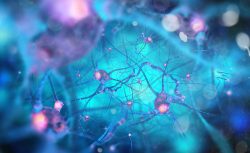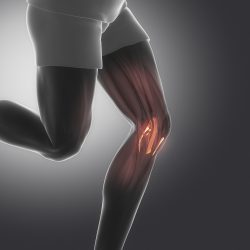Discovery of a New Source of Neurons
 It has been the belief that mammals are born with an entire supply of neurons which have to last for a lifetime. New research has discovered a particular type of stem cell that makes neurons, which are the source of new cells in the brain’s hippocampus.
It has been the belief that mammals are born with an entire supply of neurons which have to last for a lifetime. New research has discovered a particular type of stem cell that makes neurons, which are the source of new cells in the brain’s hippocampus.
Neuroscientists have found at least two different regions of the brain that grow new neurons. They are the center for our sense of smell and the seat of learning and memory, the hippocampus.
The study conducted by researchers at the Perelman School of Medicine, University of Pennsylvania, have discovered in mice a type of stem cell that is the source of this recently discovered supply of new cells in the hippocampus. The findings could help neuroscientists discover how to better maintain youthful conditions for memory and learning, and also regenerate and repair of parts of the brain following injury and with aging.
They have shown for the first time in mammals that neurons in the part of the hippocampus called the dentate gyrus, grow and then develop from a single population of stem cells over a lifetime. These new immature neurons are much more flexible in making the connections in the hippocampus compared to more mature neurons. This is vitally important for healthy memory, learning and adjusting mood.
The team has shown that the neural stem cells they have found have a common molecular signature across the lifetime of the mice. They were able to do this by labeling neural stem cells in embryos while the brain was developing and then following these cells from birth to adulthood.
This approach revealed that these new neural stem cells with their precursor’s label were constantly creating new neurons throughout the animal’s lifespan. The process is unique to the brain. Within the hippocampus these cells never cease replicating and contributing to the brain’s flexibility in mammals.
This capacity is known as plasticity which is the ability of the brain to form new connections throughout a lifetime to compensate for disease and injury and to adjust in response to new input from the environment. The team compares this process of new neuron growth within the hippocampus to adding new units to the circuitry of the brain’s motherboard.
The research team’s next steps will be to look at the same neural stem cells in other types of mammals and most importantly in humans. They plan to start the search in post mortem brain tissue to investigate how the neural stem cells population are regulated.
To view the original scientific study click below.
A Common Origin of Stem Cells Drives Developmental and Adult Neurogenesis



 A new study has a great new message…you can help prolong your life by increasing the power of your muscles. The study has shown for the first time that people tend to live longer lives when they have more muscle power.
A new study has a great new message…you can help prolong your life by increasing the power of your muscles. The study has shown for the first time that people tend to live longer lives when they have more muscle power. A new study has given insights into muscle boosting therapies for age related muscle decline and muscular dystrophies. The study conducted by scientists from Sanford Burnham Prebys, have discovered a molecular signaling pathway involving proteins that regulate how muscle stem cells decide whether to differentiate or renew.
A new study has given insights into muscle boosting therapies for age related muscle decline and muscular dystrophies. The study conducted by scientists from Sanford Burnham Prebys, have discovered a molecular signaling pathway involving proteins that regulate how muscle stem cells decide whether to differentiate or renew. There is much we can do to slow down and even reserve the body’s trend to decline. A new long term study examined how changes in physical activity in post middle age affects mortality rates.
There is much we can do to slow down and even reserve the body’s trend to decline. A new long term study examined how changes in physical activity in post middle age affects mortality rates.  Taking a stroll or sitting in a place near nature can have some very positive benefits. The findings from a recent study have established for the first time that communing with nature will significantly lower stress hormone levels.
Taking a stroll or sitting in a place near nature can have some very positive benefits. The findings from a recent study have established for the first time that communing with nature will significantly lower stress hormone levels. A new study has given us yet another good reason to exercise! The study found that exercise helps to prevent degradation of cartilage that is due to osteoarthritis.
A new study has given us yet another good reason to exercise! The study found that exercise helps to prevent degradation of cartilage that is due to osteoarthritis. A new study shows that consuming even a modest amount of high fructose corn syrup on a daily basis accelerates the growth of tumors in the intestines of mouse models. And the findings are independent of obesity. Just 12 ounces of a sugar sweetened beverage daily feeds cancer cells, boosting their growth.
A new study shows that consuming even a modest amount of high fructose corn syrup on a daily basis accelerates the growth of tumors in the intestines of mouse models. And the findings are independent of obesity. Just 12 ounces of a sugar sweetened beverage daily feeds cancer cells, boosting their growth.
 Sobering news has just come out for those who love their omelets! A new study of nearly 30,000 people has reported that adults who consumed more dietary cholesterol and eggs showed a significantly higher risk of cardiovascular disease and death from any cause.
Sobering news has just come out for those who love their omelets! A new study of nearly 30,000 people has reported that adults who consumed more dietary cholesterol and eggs showed a significantly higher risk of cardiovascular disease and death from any cause. New research from Oxford University has brought scientists closer to understanding the mysterious function of sleep. What the scientists have discovered is how oxidative stress leads to sleep. Oxidative stress is believed to be one of the reasons we age and is also a cause of degenerative diseases.
New research from Oxford University has brought scientists closer to understanding the mysterious function of sleep. What the scientists have discovered is how oxidative stress leads to sleep. Oxidative stress is believed to be one of the reasons we age and is also a cause of degenerative diseases. New research has shown that following the Mediterranean Diet for just a period of 4 days will boost exercise performance! Which is another great reason to follow one of the healthiest diets! The research team at St. Louis University in Missouri conducted the study to see if this diet would improve exercise performance and endurance. What they found was evidence that the Mediterranean diet which is already known for good health, did boost exercise performance in the study group.
New research has shown that following the Mediterranean Diet for just a period of 4 days will boost exercise performance! Which is another great reason to follow one of the healthiest diets! The research team at St. Louis University in Missouri conducted the study to see if this diet would improve exercise performance and endurance. What they found was evidence that the Mediterranean diet which is already known for good health, did boost exercise performance in the study group.